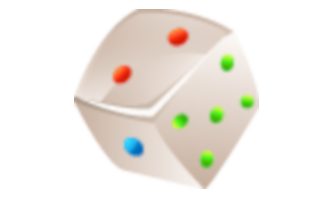Chemistry in our world
Science, Grade 6
Chemistry in our world
Study Guide

Chemistry in our world
Flash Cards

Chemistry in our world
Quiz

Chemistry in our world
Worksheets

Chemistry in our world
Games

Study Guide Chemistry in our world Science, Grade 6
❮
1
/
2
❯
CHEMISTRY IN OUR WORLD Chemistry literally affects us twenty four hours a day. Let’s look at some of the ways this occurs. Chemistry in Our Bodies At any one moment in our bodies, thousands of chemical reactions are occurring. All of these reactions are controlled by catalyst-like chemicals called enzymes. The role of an enzyme is to bring reactants together and insure that the reaction occurs. In addition, most of the chemical digestion of food we eat gets done in our small intestines with enzymes. If it wasn’t for this process, the vital nutrients that our bodies need would never be absorbed into our blood streams and reach all the cells of our bodies. These nutrients, sugar, amino acids, and fatty acids, are then broken down in the cells to release the energy our bodies need to keep us warm and make our muscles work. This exothermic reaction is called respiration. Indirectly, chemicals help our bodies in other ways. Supplements, called additives, are added to food to do several things. Vitamins are a valuable additive in many foods. These chemicals become part of the enzymes needed to control our chemical reactions. Other additives prevent food from rotting, enhance flavor and color, or change the texture of food. LESSON CHECKPOINT: What are additives and how do they help us? Chemistry in the World around Us Outside our bodies, chemicals and their reactions help us in many practical ways. Like respiration in our bodies, fuels are burned in our cars and power plants to provide energy for movement and heat. Jets move up and across the skies because of the exothermic reaction involving the burning of jet fuel. © Copyright NewPath Learning. All Rights Reserved. Permission is granted for the purchaser to print copies for non-commercial educational purposes only. Visit us at www.NewPathLearning.com.
Many of the materials that we use are alloys or mixtures of at least one metal element with another element. These chemicals usually are stronger or less reactive than just a single element. A good example is stainless steel. Iron by itself would rust quickly but by mixing other substances with iron, a rust-free substance is produced. Good gold jewelry is an alloy because pure gold is very soft. By mixing in copper or silver, the resulting alloy is much harder. LESSON CHECKPOINT: What are alloys and how do they make products better? Man-Made Chemicals Many of the chemicals that have practical value for us are synthetic polymers. These chemicals are usually made with carbon and have many repeating units in their structure. A chain of paper clips attached together describes what polymers look like. Enzymes are polymers made up of many repeating units of amino acids chemically bonded together. One example of a synthetic polymer is nylon. This strong thread-like material makes up fabric and fishing lines. PVC, a tough flexible polymer, is used in hoses and pipes. Plastics, like polypropylene, are used to make toys and parts of cars. There are many other types of synthetic polymers besides these. LESSON CHECKPOINT: What are synthetic polymers? Composites are still another way chemists help us. These mixtures of two or more substances, many of which are polymers with different properties, combine to give us better products. The material Kevlar is an example. This substance, which is used in protective clothing, combines a light weight with high strength. Fiberglass is another composite. A fiberglass surfboard is made up of a combination of glass fiber and liquid plastic. Some countertops are composites of plastic, glass, and cement and are more durable than any of the ingredients would be alone. LESSON CHECKPOINT: Name two examples of a composite. © Copyright NewPath Learning. All Rights Reserved. Permission is granted for the purchaser to print copies for non-commercial educational purposes only. Visit us at www.NewPathLearning.com.
